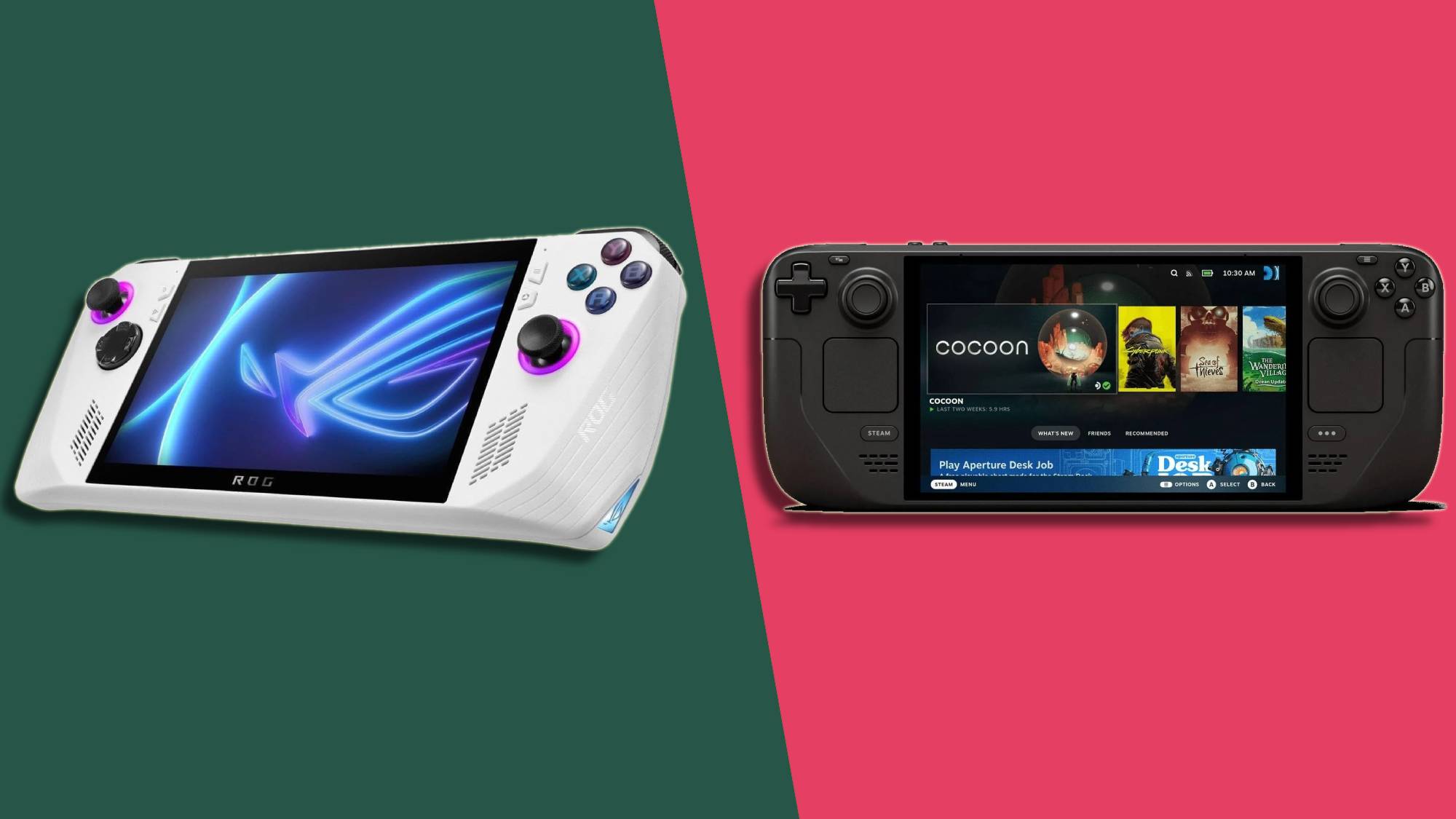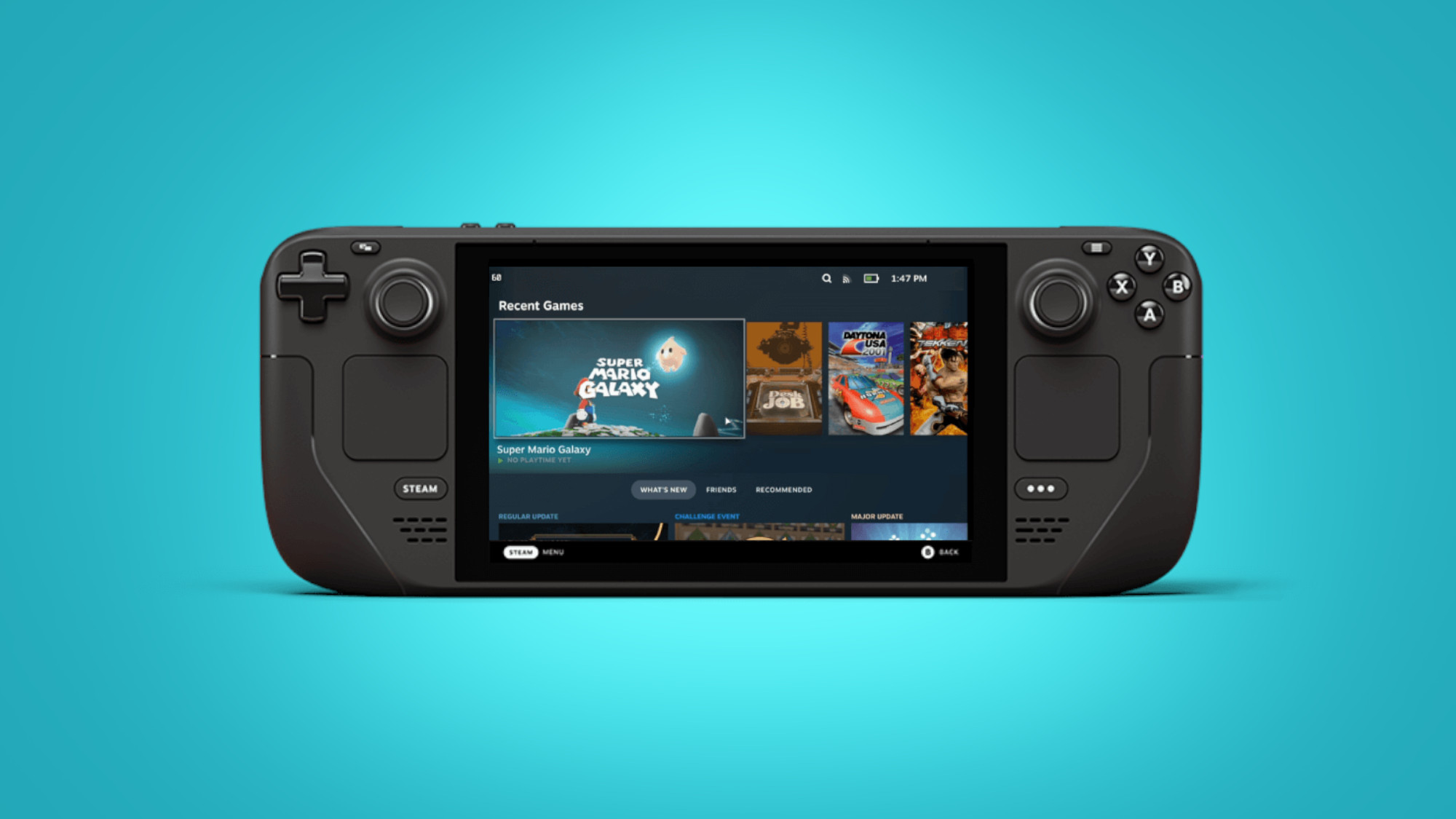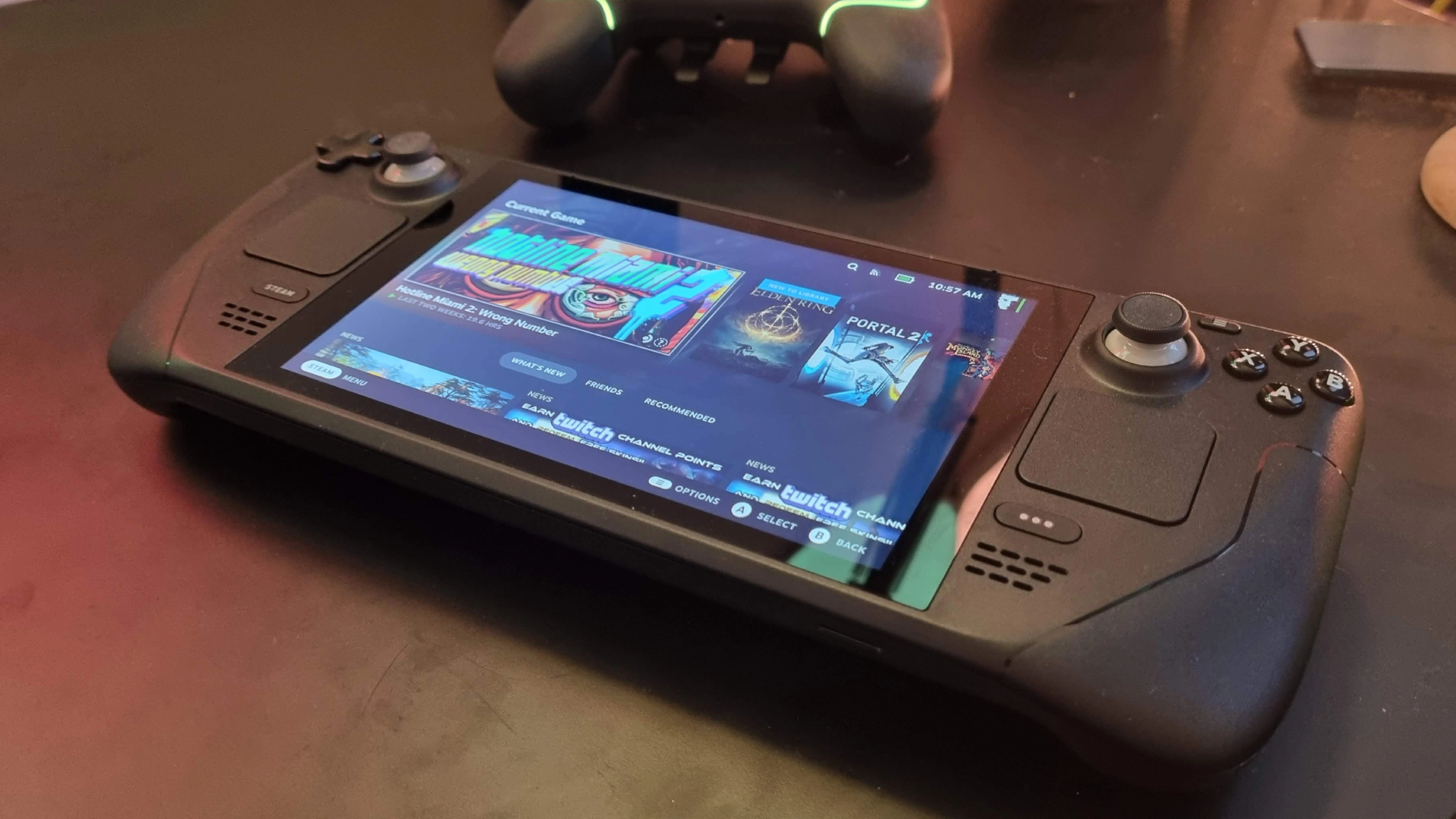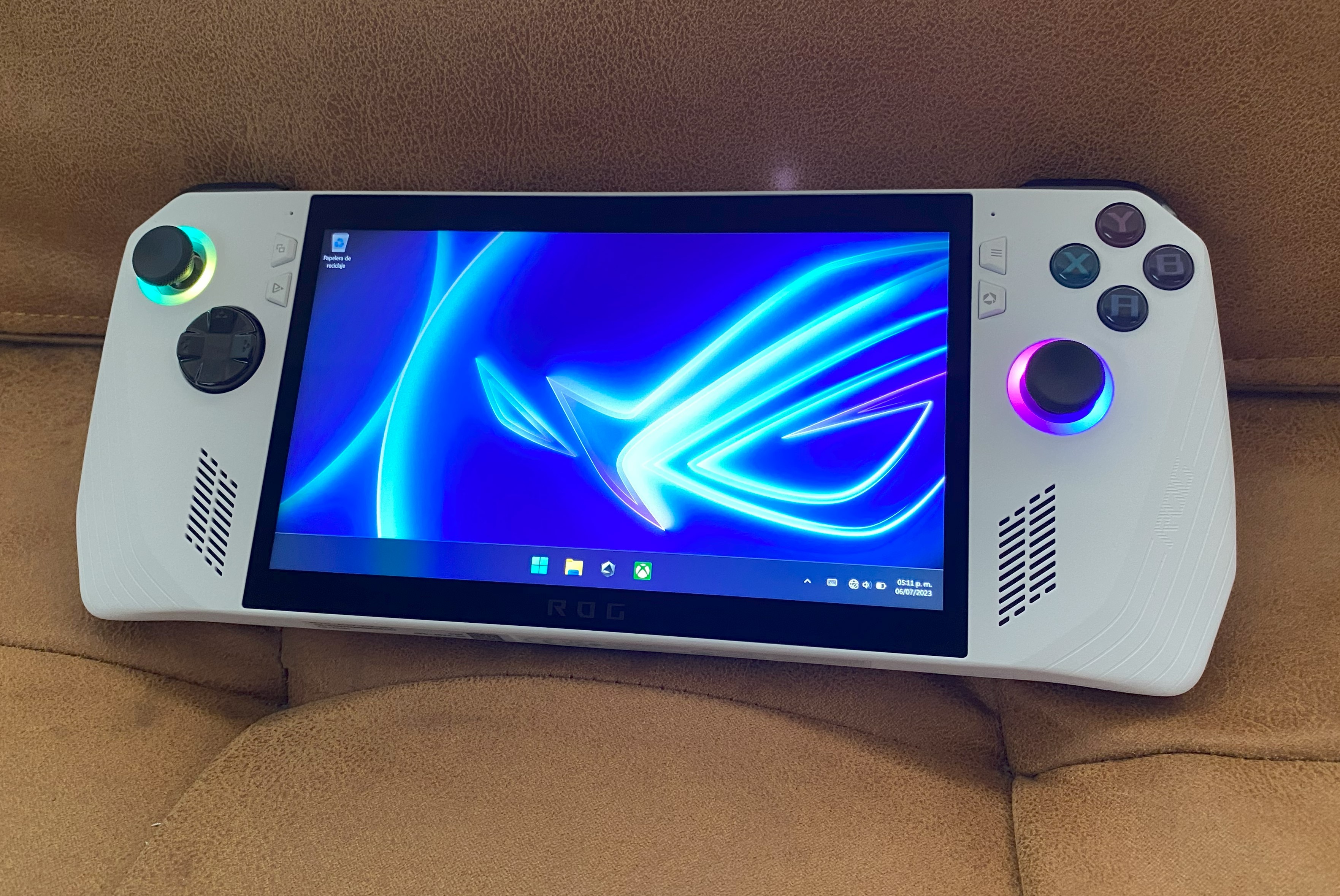
CPU: AMD Zen 2 four core 2.4-3.5GHz
Graphics: AMD RDNA 2
RAM: 16GB LPDDR5
Screen: 7-inch, 1,280 x 800 touchscreen, 60Hz
Storage: Up to 512GB PCIe SSD
Ports: USB-C, 3.5mm headphone jack, microSD
Connectivity: Wi-Fi 5, Bluetooth 5
Weight: 1.47 pounds (0.67kg)
Dimensions (W x D x H): 11.73 x 4.6 x 1.9 inches (29.8 x 11.7 x 4.9cm; W x D x H)
The original PC gaming handheld is still one of the best, but it's got some strong competition from Asus's ROG Ally.
CPU: AMD Ryzen Z1 / AMD Ryzen Z1 Extreme
Graphics: AMD Radeon Graphics
RAM: 16GB LPDDR5
Screen: 7-inch, FHD (1920 x 1080), 120Hz
Storage: 512GB PCIe SSD
Ports: USB-C, 3.5mm headphone jack, microSD
Connectivity: Wi-Fi 6E, Bluetooth 5.2
Weight: 608 g)
Dimensions (W x D x H): 11.02 x 4.37 x 0.83 ~ 1.28 inches (28.0 x 11.1 x 2.12 ~ 3.24cm; W x D x H)
The challenger and a solid PC gaming handheld in its own right, it's much more lightweight and distinctively designed than the Steam Deck.
Since the launch of Valve's Steam Deck, arguably the first major dedicated PC gaming handheld, other manufacturers have released their own takes on the PC gaming handheld like the Lenovo Legion Go, Asus ROG Ally, and MSI Claw.
The Asus ROG Ally was the second major PC gaming handheld release, and was generally well-received, but how does it compare to the Steam Deck on price, specs, and performance? Let's find out.
Steam Deck vs Asus ROG Ally: price

Valve’s Steam Deck costs $399 / £349 / AU$649 for its base 256GB LCD model, and there are two additional OLED models, which are $549 / £479 / AU899 for the 512GB version and $649 / £569 / AU$1,049 for the 1TB model.
There are two models of the Asus ROG Ally with the entry-level version equipped with the AMD Ryzen Z1 SoC, which currently retails for $399.99 (around £640 / AU$1,280), and the version with an AMD Ryzen Z1 Extreme selling for for $549.99 / £449 / AU$999.
In terms of pricing, Steam Deck was the original the winner, though since the ROG Ally's launch in 2023 it's dropped in price considerably with plenty of deals bringing it down even lower. Right now, both systems are pretty even in price, so they tie in this regard.
Steam Deck vs Asus ROG Ally: design & features

The original Asus ROG Ally is much smaller and lighter than the Steam Deck and other PC gaming handhelds., and its unique honeycomb white chassis made it stand out. Many gamers will be rightfully tempted to invest in it because of its far more lightweight and distinctive aesthetically.
They both feature dual analog sticks, a 7-inch screen, and buttons in the front and back of the system. Both also have ventilation exhausts on the top of the system to compensate for the massive amounts of heat generated by their components.
Their button layout and grips are also quite similar in size, feel, and quality. The Steam Deck is now slightly lighter and smaller, with an OLED model that upgrades the display even more.
In terms of design, I would nominate the ROG Ally as the tentative winner as it's simply lighter and better looking. But if you're craving a simple and practical design, then the Steam Deck may be more your cup of tea.
Steam Deck vs Asus ROG Ally: specs

Steam Deck vs Asus ROG Ally: performance

The obvious difference between the Steam Deck and Asus ROG Ally are its specs, as the latter is a far more powerful machine due to its superior CPU. This means that games look much cleaner and run better on the ROG Ally.
While the ROG Ally isn't capable of the power gaming of its updated version, the ROG Ally X, it's still quite impressive in its own right. It's capable of smoothly running DirectX 11 and even DirectX 12 at times (though the latter can crash after reboot. I tested this out with the game Ghostrunner and it ran almost completely stutter-free.
Shockingly, even the older Steam Deck model can run demanding games like Cyberpunk 2077, though you'll have to keep the settings down. And the OLED version can handle the game even better, with Medium and Low averaging around 26fps.
The Steam Deck has a better OS, however, as the Armory Crate UI on the Ally is, quite frankly, just plain bad (and that's not even factoring in how poorly Windows 11 runs on a gaming handheld). Meanwhile, Steam's OS is built specifically for the system, so it's faster to start up and more intuitive to use.
Performance-wise, the Steam Deck gets the win here. While gaming performance is better overall on the ROG Ally, the Steam Deck is more consistent and its OS is vastly superior.
Steam Deck vs Asus ROG Ally: verdict
So which is the better PC gaming handheld? Surprisingly, both systems are pretty much tied at this point.
The Steam Deck is still considered by many to be the best PC gaming handheld, and for good reason, since it offers the most balance between portability, price, and performance. It's a well-rounded machine that lets you play the latest PC games on the go with an intuitive UI and solid battery life for its specs. If this is your first PC gaming handheld rodeo, then the Steam Deck is easily the best choice.
Meanwhile, the Asus ROG Ally is a great value in its own right due to it much lower price of entry that rivals the Steam Deck, its lightweight, gorgeous, and highly portable design, and its excellent specs and gaming performance. Either way, you really can't go wrong with either handheld.
Recently purchased a Steam Deck or Asus ROG Ally? Consider checking out our list of the best Steam games and best PC games to get your collection going on either device.







